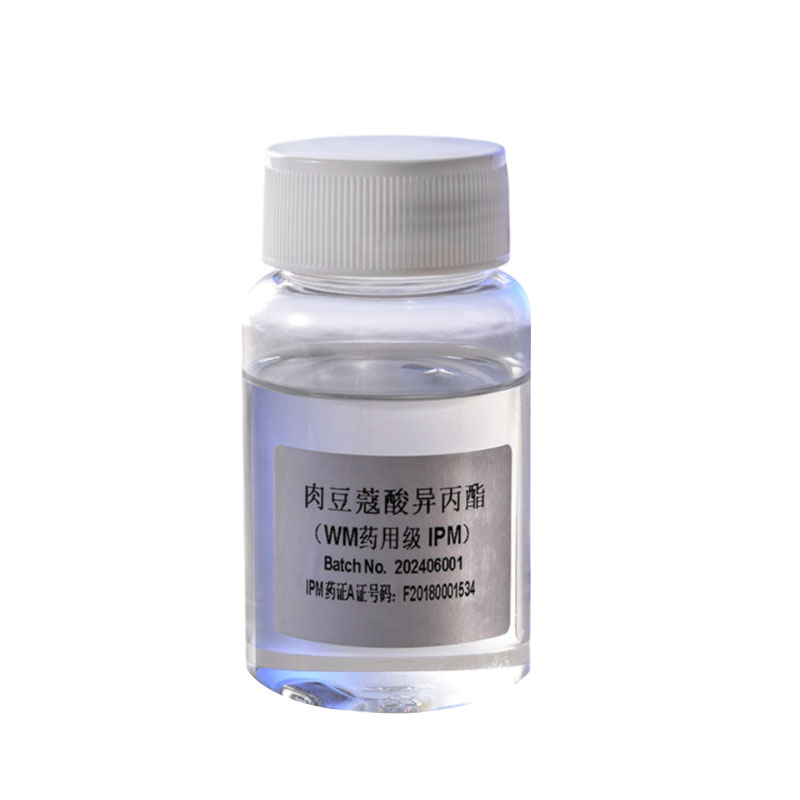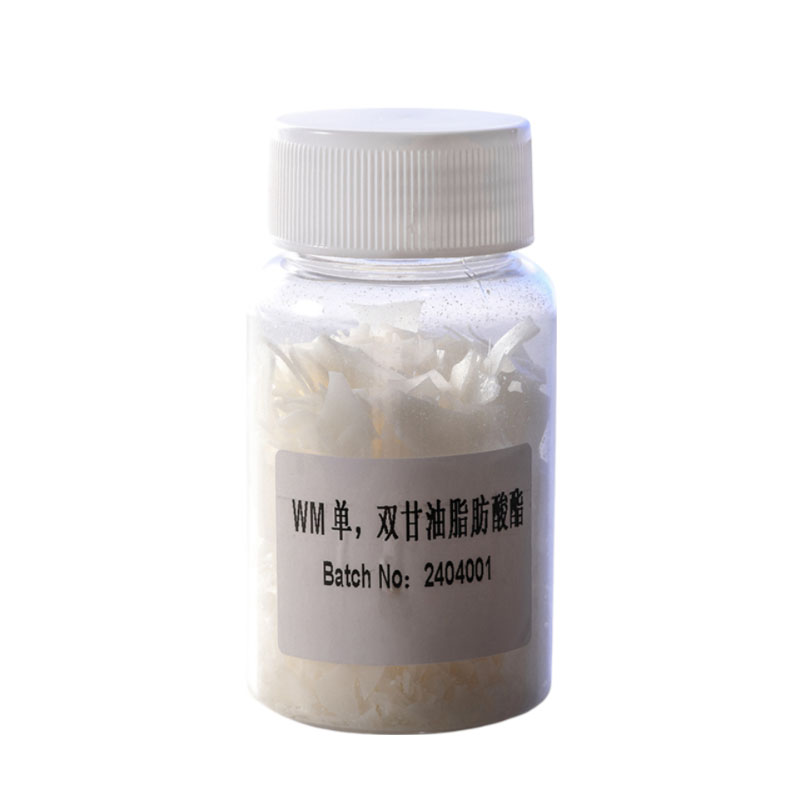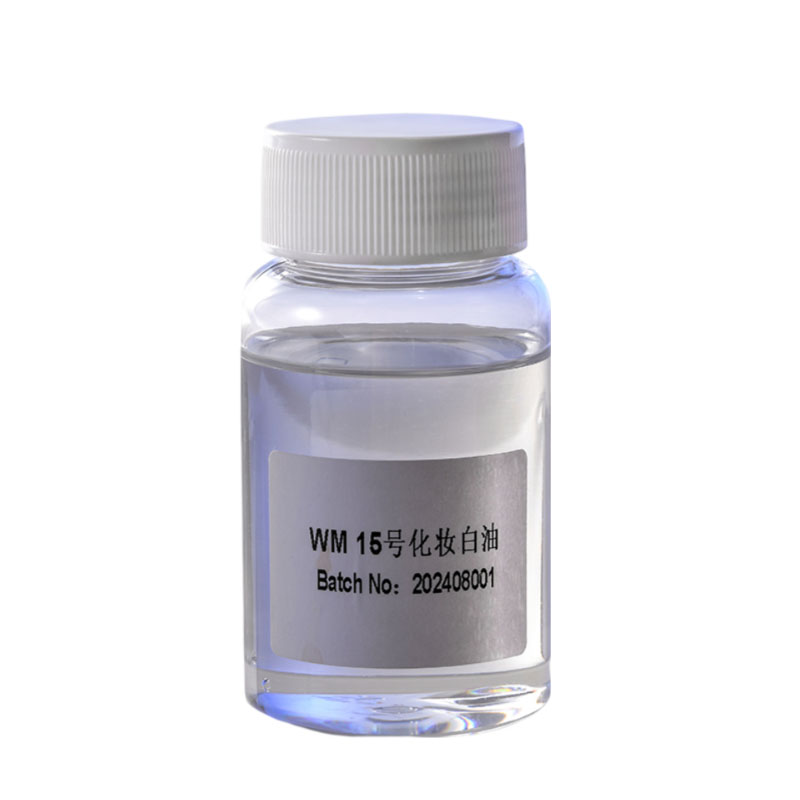Why is IPM isopropyl myristate insoluble in water but miscible with other organic solvents?
Release Time : 2025-04-16
In the fields of cosmetics, personal care and pharmaceuticals, IPM isopropyl myristate, as an important organic compound, has attracted much attention for its unique physical and chemical properties and wide application value. Although IPM is a colorless to light yellow oily liquid with low viscosity and good skin absorption, one of its most notable characteristics is that it is insoluble in water but miscible with many other organic solvents.
1. The molecular structure of IPM and the secret of its insolubility in water
IPM is synthesized by esterification of high molecular weight fatty acids (myristic acid) and isopropyl alcohol. In its molecular structure, the long-chain fatty acid part gives IPM a certain hydrophobicity and oil solubility, while the isopropyl alcohol group increases its intermolecular interaction force, but it is not enough to change its overall non-polar characteristics.
The core reason for insolubility in water: Water molecules are polar molecules that form a highly ordered network structure through hydrogen bonds. As a non-polar molecule, IPM lacks the ability to form hydrogen bonds with water molecules, and its long-chain structure will destroy the orderly arrangement of water molecules, resulting in extremely weak interaction between the two, so IPM is insoluble in water.
2. Molecular basis of miscibility of IPM with organic solvents
Although IPM is insoluble in water, it can be miscible with a variety of organic solvents such as alcohol, ether, dichloromethane and oil. This phenomenon stems from the principle of "like dissolves like", that is, substances with similar polarity are more likely to dissolve in each other.
Molecular mechanism of miscibility: Non-polar interaction: IPM and most organic solvents are non-polar or weakly polar substances, and the molecules interact through van der Waals forces (dispersion forces), which are particularly significant in non-polar molecules.
Structural similarity: The long-chain fatty acid part of IPM is similar to the hydrocarbon chain structure of oil solvents, while the isopropanol group forms a weak dipole-dipole interaction with the hydroxyl group of alcohol solvents, further promoting miscibility.
Low viscosity and fluidity: The low viscosity of IPM enables it to easily penetrate and disperse in organic solvents to form a uniform solution.
3. Advantages of IPM in cosmetics and personal care products
The solubility characteristics of IPM make it irreplaceable in cosmetics and personal care products:
Emulsifier and wetting agent: IPM can adjust the interfacial tension of the oil-water phase, help form a stable emulsion (such as lotion, cream), and improve the spreadability and permeability of the product, making the skin feel refreshing and non-greasy.
Moisturizing and nourishing: Although IPM itself is insoluble in water, its oil solubility enables it to penetrate into the stratum corneum, enhance the barrier function of the skin, lock in moisture, and carry other oily ingredients (such as vitamin E, plant essential oils) to provide nourishment.
Antibacterial and antioxidant: IPM has certain antibacterial and antioxidant capabilities, which can inhibit the growth of microorganisms, delay product oxidation and deterioration, and thus extend the shelf life.
4. Innovative application of IPM in the pharmaceutical field
Drug carrier and solvent: IPM can dissolve a variety of fat-soluble drugs and improve the bioavailability of drugs. For example, in transdermal drug delivery systems, IPM can enhance the ability of drugs to penetrate the skin as a penetration enhancer; in oral preparations, it can help poorly soluble drugs disperse evenly as a solvent.
Stabilize drug ingredients: IPM's antioxidant properties can protect drugs from light, heat and oxygen, reduce degradation reactions, and ensure the stability of drugs during storage and use.
IPM isopropyl myristate occupies an important position in the fields of cosmetics, personal care and pharmaceuticals due to its unique molecular structure and solubility characteristics. Its characteristics of being insoluble in water but miscible with organic solvents are not only due to the interaction between non-polar molecules, but also converted into improved product performance in practical applications.
1. The molecular structure of IPM and the secret of its insolubility in water
IPM is synthesized by esterification of high molecular weight fatty acids (myristic acid) and isopropyl alcohol. In its molecular structure, the long-chain fatty acid part gives IPM a certain hydrophobicity and oil solubility, while the isopropyl alcohol group increases its intermolecular interaction force, but it is not enough to change its overall non-polar characteristics.
The core reason for insolubility in water: Water molecules are polar molecules that form a highly ordered network structure through hydrogen bonds. As a non-polar molecule, IPM lacks the ability to form hydrogen bonds with water molecules, and its long-chain structure will destroy the orderly arrangement of water molecules, resulting in extremely weak interaction between the two, so IPM is insoluble in water.
2. Molecular basis of miscibility of IPM with organic solvents
Although IPM is insoluble in water, it can be miscible with a variety of organic solvents such as alcohol, ether, dichloromethane and oil. This phenomenon stems from the principle of "like dissolves like", that is, substances with similar polarity are more likely to dissolve in each other.
Molecular mechanism of miscibility: Non-polar interaction: IPM and most organic solvents are non-polar or weakly polar substances, and the molecules interact through van der Waals forces (dispersion forces), which are particularly significant in non-polar molecules.
Structural similarity: The long-chain fatty acid part of IPM is similar to the hydrocarbon chain structure of oil solvents, while the isopropanol group forms a weak dipole-dipole interaction with the hydroxyl group of alcohol solvents, further promoting miscibility.
Low viscosity and fluidity: The low viscosity of IPM enables it to easily penetrate and disperse in organic solvents to form a uniform solution.
3. Advantages of IPM in cosmetics and personal care products
The solubility characteristics of IPM make it irreplaceable in cosmetics and personal care products:
Emulsifier and wetting agent: IPM can adjust the interfacial tension of the oil-water phase, help form a stable emulsion (such as lotion, cream), and improve the spreadability and permeability of the product, making the skin feel refreshing and non-greasy.
Moisturizing and nourishing: Although IPM itself is insoluble in water, its oil solubility enables it to penetrate into the stratum corneum, enhance the barrier function of the skin, lock in moisture, and carry other oily ingredients (such as vitamin E, plant essential oils) to provide nourishment.
Antibacterial and antioxidant: IPM has certain antibacterial and antioxidant capabilities, which can inhibit the growth of microorganisms, delay product oxidation and deterioration, and thus extend the shelf life.
4. Innovative application of IPM in the pharmaceutical field
Drug carrier and solvent: IPM can dissolve a variety of fat-soluble drugs and improve the bioavailability of drugs. For example, in transdermal drug delivery systems, IPM can enhance the ability of drugs to penetrate the skin as a penetration enhancer; in oral preparations, it can help poorly soluble drugs disperse evenly as a solvent.
Stabilize drug ingredients: IPM's antioxidant properties can protect drugs from light, heat and oxygen, reduce degradation reactions, and ensure the stability of drugs during storage and use.
IPM isopropyl myristate occupies an important position in the fields of cosmetics, personal care and pharmaceuticals due to its unique molecular structure and solubility characteristics. Its characteristics of being insoluble in water but miscible with organic solvents are not only due to the interaction between non-polar molecules, but also converted into improved product performance in practical applications.









